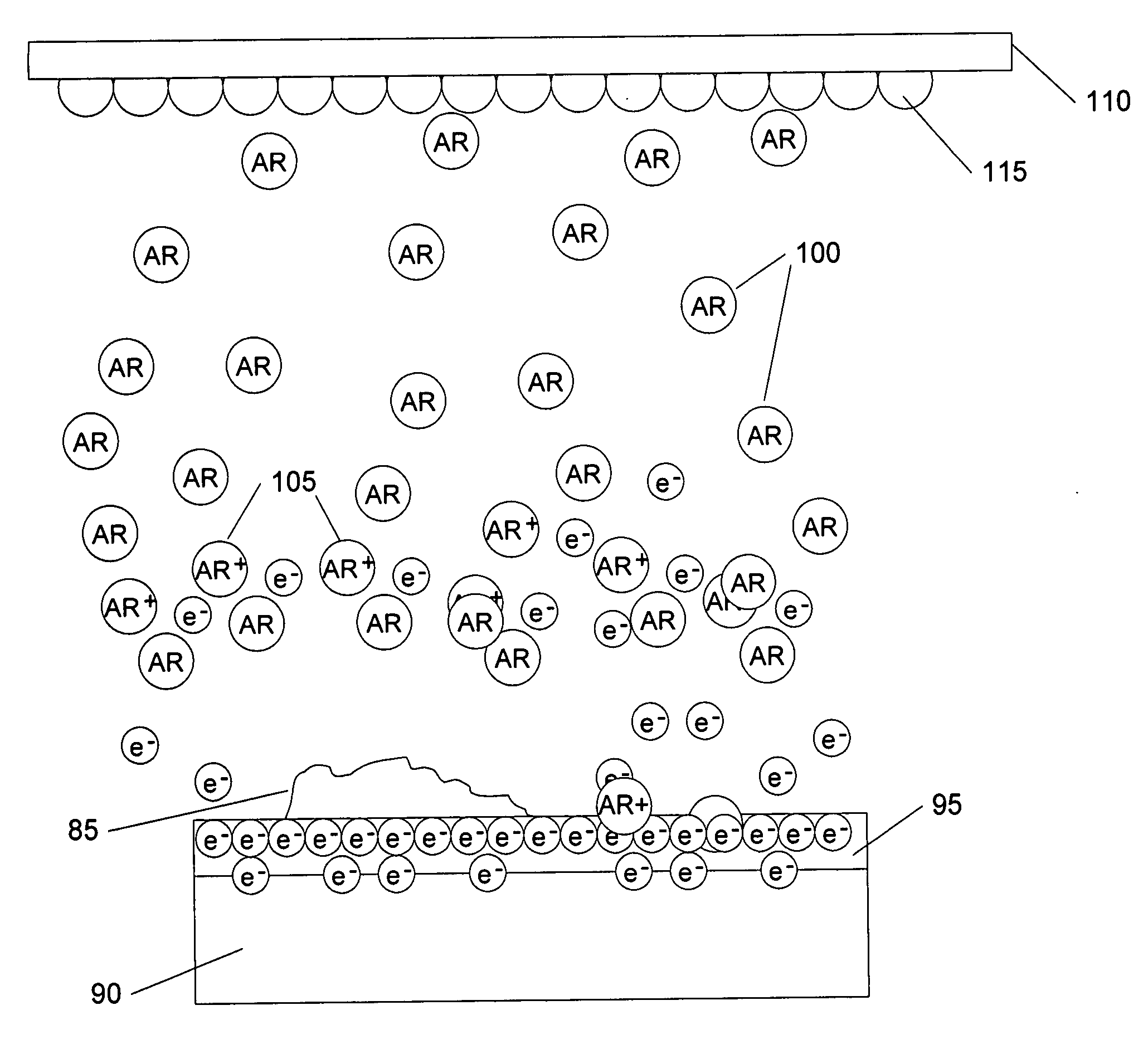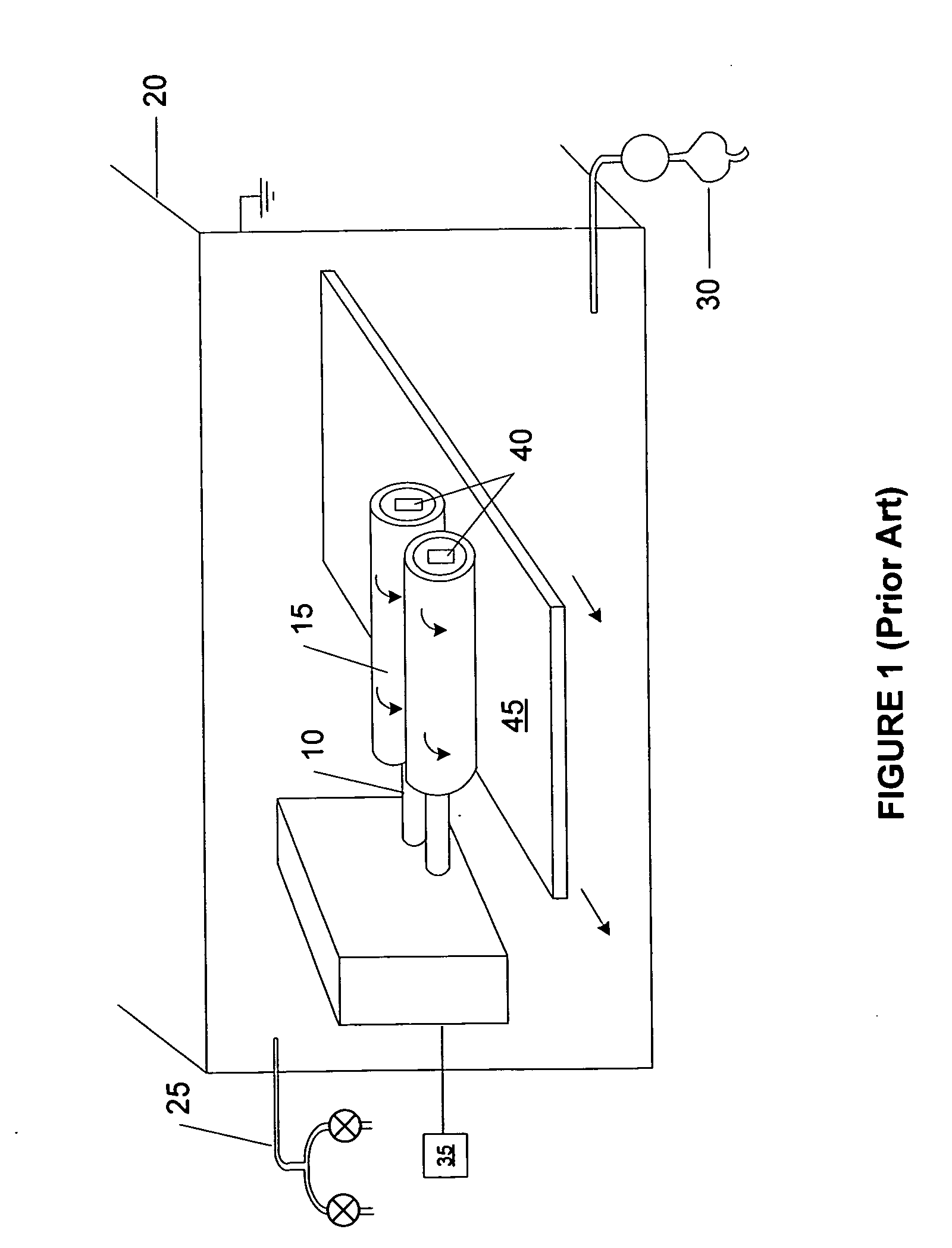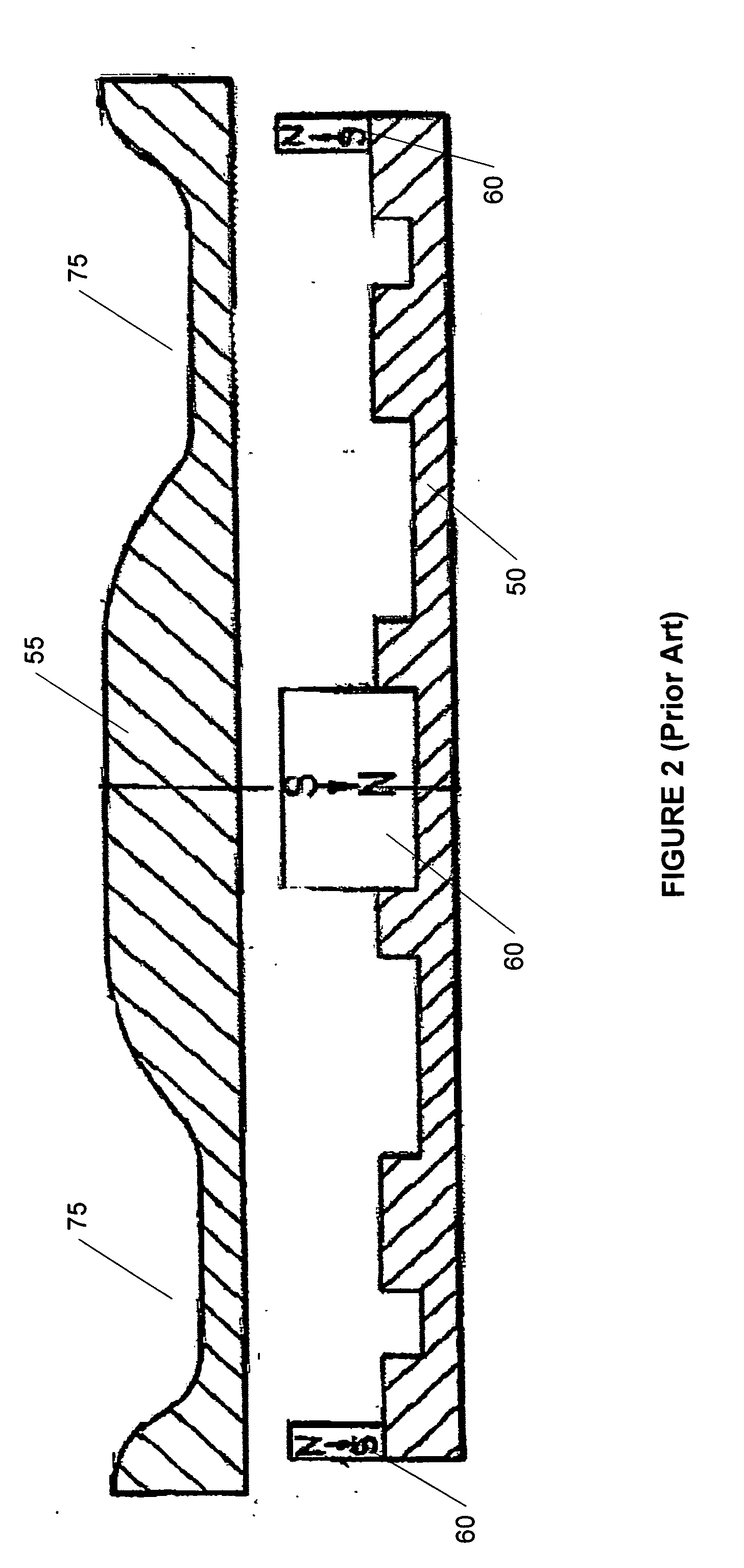System and method for modulating power signals to control sputtering
a technology of power signal and power supply, applied in the direction of electrolysis components, vacuum evaporation coatings, coatings, etc., can solve the problems of unwanted debris on the substrate, poor quality films, and industry has not yet developed reliable, efficient and commercially practical solutions
- Summary
- Abstract
- Description
- Claims
- Application Information
AI Technical Summary
Benefits of technology
Problems solved by technology
Method used
Image
Examples
Embodiment Construction
[0046] Referring now to the drawings, where like or similar elements are designated with identical reference numerals throughout the several views, and referring in particular to FIGS. 6A and 6B, they illustrates the arc prevention capabilities of a sputtering system that includes a pulsed-DC power supply. In this illustration, a pulsed-DC power supply (not shown) is used to provide a pulsed-DC signal to the cathode 90.
[0047]FIG. 6B illustrates a pulsed-DC signal corresponding to FIG. 6A. Notice that the stable voltage 120 is around negative 100 volts (−100). At periodic intervals, the power supply reverses the voltage for a short period. For example, the power supply can provide a 3 or 4 microsecond positive pulse 125 to the cathode 90. This positive pulse 125 positively charges the target 95 and the cathode 90. FIG. 6A reflects this charge with the “+” signs on the target 95. Because the Argon ions 105 are also positively charged, they are repelled by the same positive charge on ...
PUM
| Property | Measurement | Unit |
|---|---|---|
| voltage | aaaaa | aaaaa |
| voltage | aaaaa | aaaaa |
| steady-state DC voltage | aaaaa | aaaaa |
Abstract
Description
Claims
Application Information
 Login to View More
Login to View More - R&D
- Intellectual Property
- Life Sciences
- Materials
- Tech Scout
- Unparalleled Data Quality
- Higher Quality Content
- 60% Fewer Hallucinations
Browse by: Latest US Patents, China's latest patents, Technical Efficacy Thesaurus, Application Domain, Technology Topic, Popular Technical Reports.
© 2025 PatSnap. All rights reserved.Legal|Privacy policy|Modern Slavery Act Transparency Statement|Sitemap|About US| Contact US: help@patsnap.com



